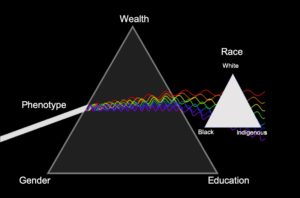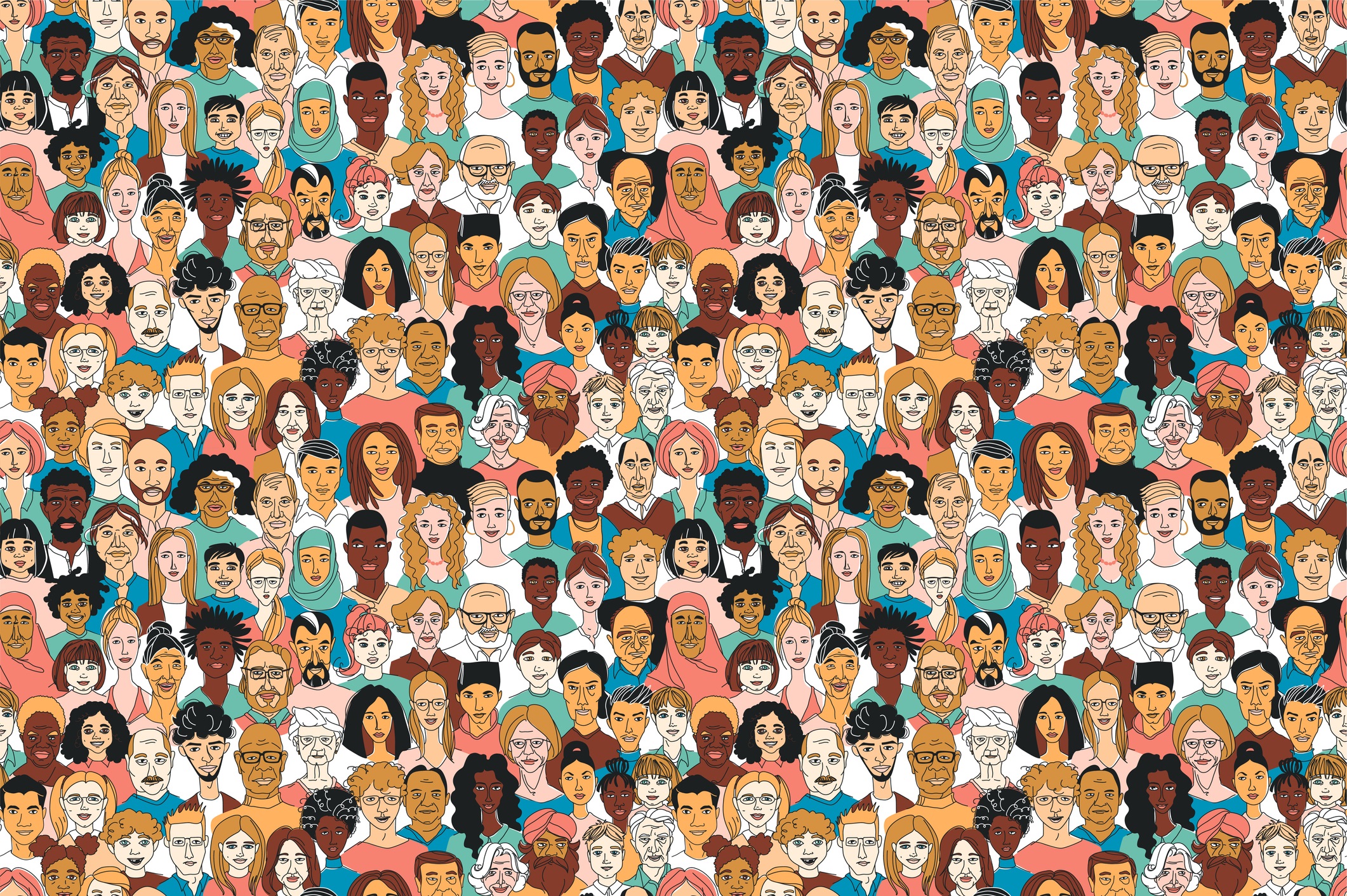This blog is based on a presentation given during the COMPAS Seminar Series, Race, Ethnicity and Migration.
Public opposition to immigration is widespread and politically charged. Yet our understanding of this phenomenon has suffered from a serious methodological shortcoming: it often employs aggregate measures of attitudes towards immigrants, which do not distinguish between different migrant groups.
Few studies so far examine whether public preferences apply equally to all types of immigrants, or if public opinion distinguishes between social and ethno-racial groups. In one exception, however, Ford (2011) examines disaggregated British attitudes to migration from seven different world regions, and discovers a consistent hierarchy of preferences between immigrant groups, with less opposition to white and culturally more proximate immigrant groups, compared to their non-white and culturally more distinct counterparts.
Race matters for immigrants’ integration – but we need to achieve a better understanding of how.
Of course, “race” as a biological category or scientifically reliable measure of human genetic variation does not exist per se. It is an essentializing socio-cultural construct. Relatedly, ethnicity is not a series of objective physical and cultural characteristics, but the result of complex processes of social classification. As such, some authors have grown critical of the usefulness of both concepts to understand migratory experiences (Goldberg, 2015), arguing that linguistic skills, residence status, and economic and geopolitical issues matter more than race- and ethnicity-based discrimination.
Adding to this debate, we argue that although most societies no longer defend systemic theories based on an allegedly objective hierarchy of “races,” socio-racial gradients shape societies worldwide, and, as such, condition the integration of migrants and refugees (Freier et al., 2021). Since societies think with, and through, racial and ethnic categories, these concepts systematically structure practices that shape access to resources and opportunities (Shweder, 1991; Kibria et al., 2013). Here, it is critical to recognize that socio-racial hierarchies are contingent on local contexts, and are intertwined with nation-building processes.

Consider the case of Latin America. In contrast to sharp categorical and often binary concepts of race found in the Global North, race historically has operated as slippery and evolving relational categories, with the interpretation of perceived phenotypic differences conditioned by gender, education, and wealth - much like light changing its colour as it passes through a prism. At the same time, socio-racial differences in the region operate across a hierarchical pyramid of relational continua, and blend into one another, rather than constituting sharply distinct categories, thus resembling a hierarchical mosaic.
Latin America’s colonial heritage bequeathed it three racial poles – white, black, and indigenous – which the viceroyalties sought to legislate as castes precisely because of the high degree of mixing. At the same time, the region’s understanding of race, is rooted in its post-colonial, republican history. While some countries explicitly sought to encourage international migration in the late-19th and early 20th centuries to “whiten” the population, a counter discourse of mestizaje emerged and spread in the early 20th century, seeking to generate a unitary sense of nationality and belonging. Although the discourse and construction of the mestizo has sought the negation of race, racism – intertwined with classism – continue to define many Latin American societies, albeit in different ways. Members of societies across the region learn complex social codes allowing them to position themselves at different moments higher or lower in the socio-racial hierarchy depending on the context. Race is thus not static, rather it is a complex and moveable function of one’s gender, wealth, education, and phenotype relative to the other within the hierarchical pyramid of relational continua.
Local socio-racial hierarchies, and the myriad ways both locals and immigrants position themselves within them, matter for immigrant integration and inclusion in the region. For example, existing evidence suggests that locals’ position in Peru’s socio-racial hierarchy affects the perception of Venezuelan immigrants. Members of the socio-economic sectors A & B, which is strongly correlated with the interpretation of being more “white” and “European,” have had a more favourable view of Venezuelan immigrants. At the same time, most Venezuelans tend to feel superior to Peru in racial terms given the implicit inferior social place given to indigenous peoples and their more prominent influence in Peru’s racial make-up, a position they often explain in terms of “beauty” (Fernández, 2019).
Given that race and ethnicity as social categories are real (Smedley & Smedley, 2005), it is important to find ways to better interrogate how socio-racial hierarchies condition the reception of migrants and refugees. On the one hand, more nuanced understandings of local socio-racial hierarchies will help us better comprehend the migration and integration experiences of migrants and refugees as seen through these categories. On the other hand, migration, especially sudden large-scale immigration, leading to clashes of different socio-racial hierarchies, provides an analytical lens for studying and understanding these hierarchies themselves.
Pursuing this line of research will require methodological innovation for studying societies with relational categories of race. One example is the Implicit Association Test (IAT), currently the most popular measure for understanding the unconscious racial bias people have towards others (Greenwald, McGhee and Schwartz, 1998). However, the IAT only focuses on testing racial bias with variations of white and black faces, stripped of the critical social information other societies require for interpreting race. The method in its current form may not be apt for measuring bias for populations in the Global South, such as Latin America, where race operates more relationally – as a mosaic – and where, culturally, other racial poles beyond black/white exist. We thus suggest – and are currently working toward – an adaptation of the IAT and other methodological channels, such as the implementation conjoint experiments, to study research on race and immigration in the Global South.
Luisa Feline Freier and Matthew Bird are both Associate Professors at the Universidad del Pacífico (Lima, Peru).
References
Fernández Rodríguez, N. (2019). La migración venezolana en Perú (2018-2019): Derechos Humanos, percepciones mutuas y xenofobia. (Tesis de Fin de Máster). Universidad Carlos III de Madrid.
Ford, Robert. (2011). Acceptable and unacceptable immigrants: the ethnic hierarchy in British immigration preferences. Journal of Ethnic and Migration Studies 37: 1017-1037.
Freier, L.F., M. Bird and S. Castillo, “Race, Ethnicity and Forced Displacement”, in P. Adey et al. (eds.), Handbook of Displacement . London Palgrace MacMillan, 2020.
Goldberg, D.T. (2015). Are we all postracial yet?. Cambridge: Polity
Greenwald, A. G., McGhee, D. E., & Schwartz, J. K. L. (1998). Measuring individual differences in implicit cognition: The Implicit Association Test. Journal of Personality and Social Psychology, 74, 1464-1480. http://dx.doi.org/10.1037/0022-3514.74.6.1464
Kibria, N., Bowman, C., & O’Leary, M. (2013). Race and Immigration. Cambridge: Polity.
Shweder, R. (1991). Thinking through Cultures: Expeditions in Cultural Psychology. Cambridge, MA: Harvard University Press.
Smedley, A., & Smedley, B. D. (2005). Race as biology is fiction, racism as a social problem is real: Anthropological and historical perspectives on the social construction of race. American Psychologist, 60(1), 16–26.
